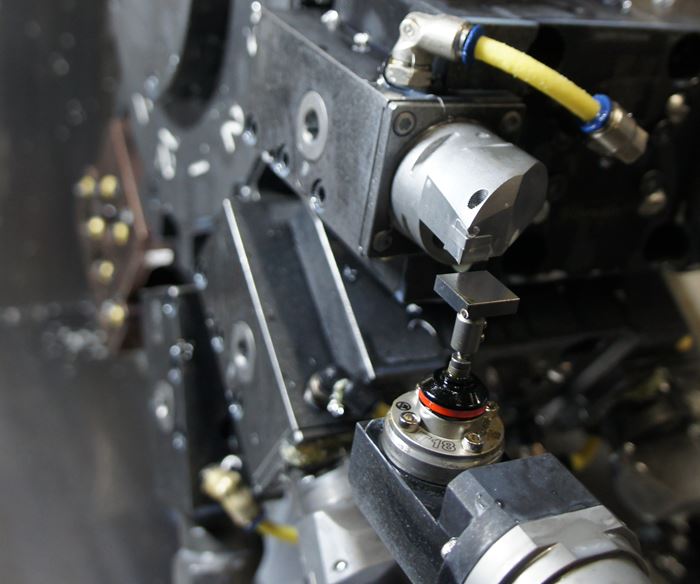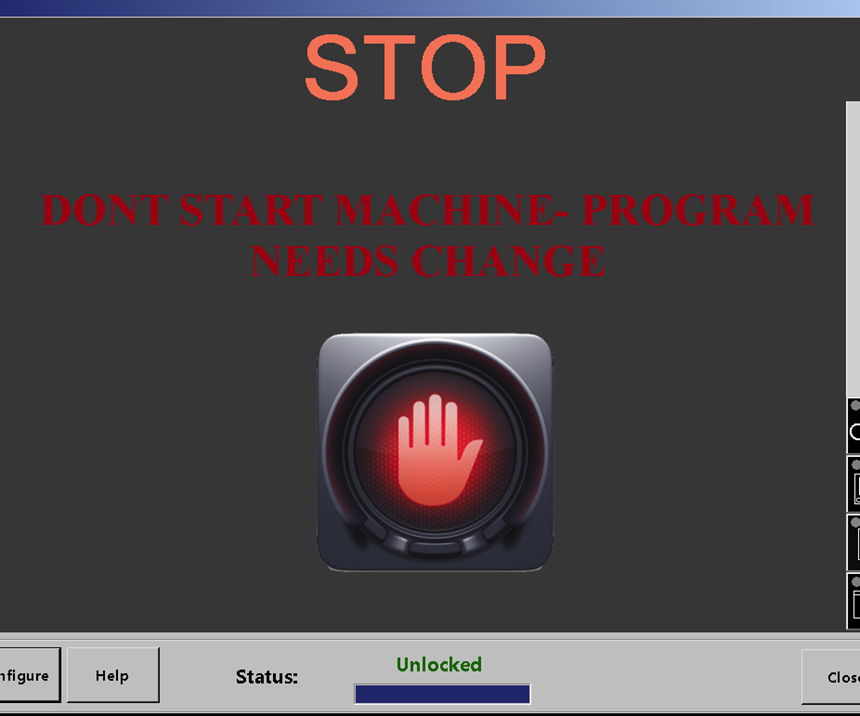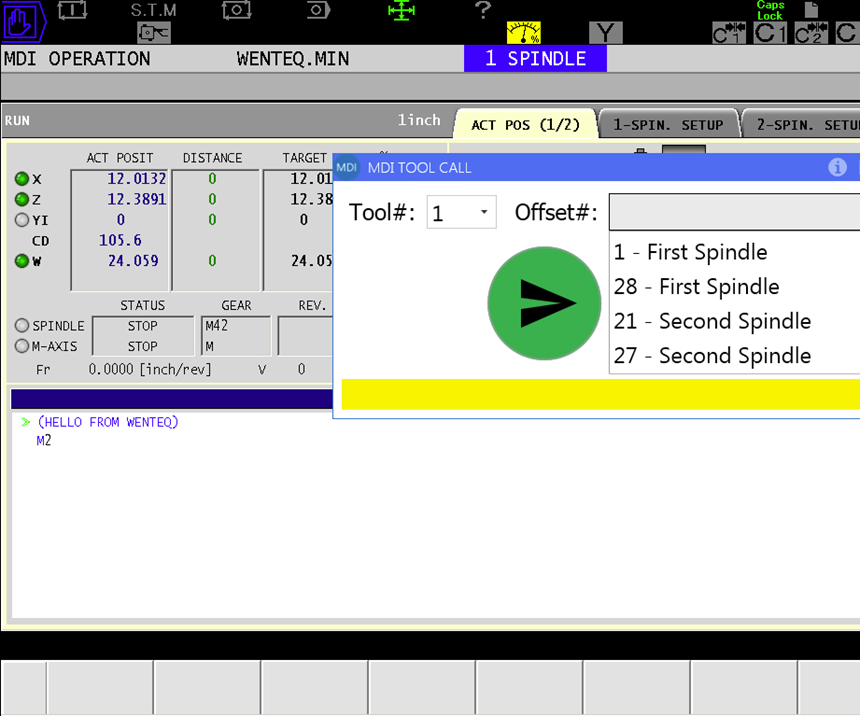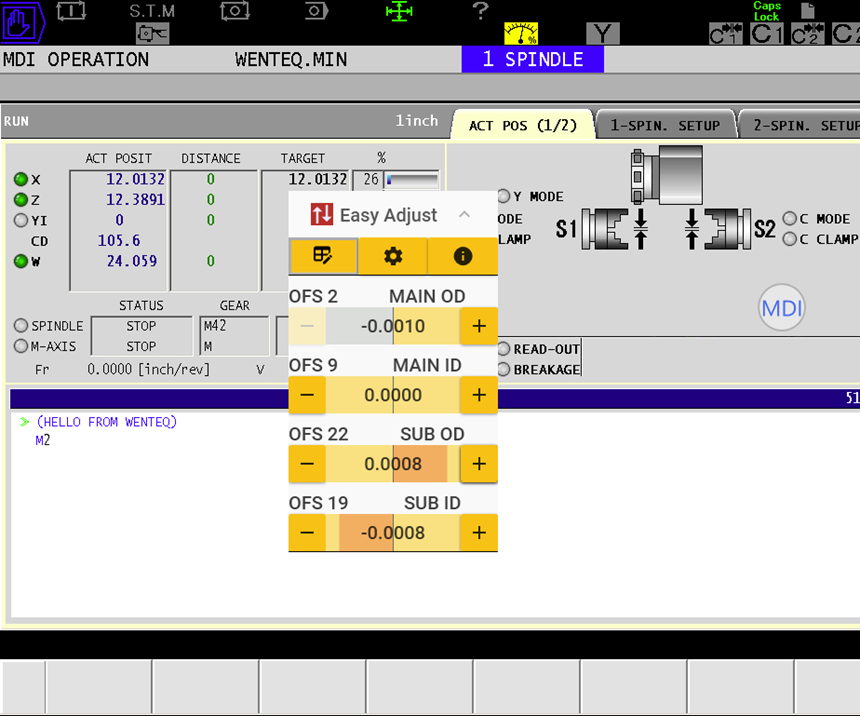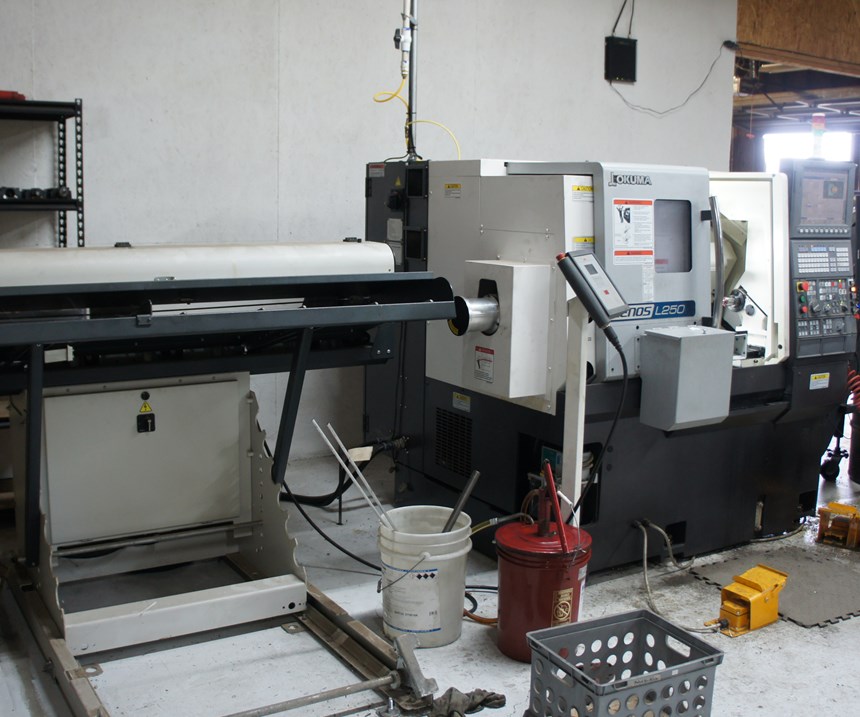Share





“Walnuts are cool,” Shawn Wentzel says with a shrug when asked why he decided to plant 7,000 walnut trees on his property in Lodi, California. Now two years old, the orchard is a growing side business. Surrounded by rolling plains and vineyards, it begins at the back door of his primary source of income: an old horse-barn-turned-machine-shop with plenty of space for additional milling and turning equipment to complement the current stable of six machine tools.
He named the shop Wenteq, and with revenue growing at approximately 10 percent per year, prospects for filling the rest of the 15,000-square-foot space seem bright. The newest technology addition is a robot to load and unload various parts for automotive and agricultural equipment from a turning center. With Mr. Wentzel opting to do much of the legwork, integrating the robot is a work in progress. No matter. As was the case with the walnut trees, he sees no barrier in his lack of automation-integration experience. “There’s nothing like doing it yourself,” the 36-year-old says, articulating the independent spirit that first led him to turn his machining hobby into a business nearly 15 years ago. “What can anyone learn in school that they can’t learn on the shop floor?”
This inclination to make his own way is one reason why Mr. Wentzel says he appreciates the open-architecture Thinc-OSP CNCs on the shop’s five Okuma machine tools. These controls’ application programming interface (API), which is essentially the set of tools and resources used to integrate with the CNC and develop functionality for it, is based on the same Microsoft Windows operating platform that drives many personal computers. That means the CNCs can use much of the same software as any other Windows-based computer, including downloadable apps such as the GPS navigators, heart-rate monitors and weather trackers common to consumer mobile devices.
Of course, the apps Okuma offers are designed to make life easier in a CNC machine shop. Many are available for free via the machine tool builder’s online app store. This store has been growing steadily since its launch in 2014, thanks in part to the active participation of shops like Wenteq. Whenever Mr. Wentzel has had an idea—whenever there is something he wished his CNC could do—he says he likely can make it happen by asking Okuma distributor Gosiger Automation to develop an app.
He is not alone. According to Okuma, many apps now available for download originated with end users like Mr. Wentzel. In this way, the company essentially invites its customers to participate in the development of new CNC functionality. Mr. Wentzel was an early enthusiast of this approach, and Wenteq became an early proving ground after the app store’s debut. “When an app came out, we were never scared to throw it on a machine and try it out,” he says.
These small programs all help Mr. Wentzel and his three shopfloor employees avoid making mistakes or wasting time, he says. For instance, the shop does not have an offline tool presetter (not yet, anyway), so many of the most commonly used apps help streamline the manual entry of compensating offsets at machine controls. Others provide basic machine monitoring functionality. Here are five examples of apps the shop finds valuable, two of which were created at Mr. Wentzel’s request:
1. Variable Manager
This app enables inexperienced operators to edit common variables in the control’s parameters section without making mistakes. (Common variables are used to store offsets, part counts and other temporary data that is specific to a particular part program.) “I don’t want employees going into the CNC’s parameters section,” Mr. Wentzel explains. “The common variable section is one page away from a machine system location. If something were to be changed on this page, the machine could crash.”
Instead, Variable Manager presents only the relevant common variables, which can be pulled from the CAM program or defined by Mr. Wentzel when he programs a job. All variable slots can be clearly labeled for convenience and efficiency, and a “revert” function can quickly restore previous values in the event of an error.
On the shop’s palletized horizontal machining center (HMC), Variable Manager makes it easy for even inexperienced operators to change tools for a new job without interrupting production. To facilitate this, the machine’s cycle includes a “dummy pallet” associated with a CAM program that does nothing more than initiate a macro to touch-probe the newly changed tools. Any time before this pallet cycles in, the operator simply opens Variable Manager, inputs the new tool numbers and clicks “set” to initiate a probing cycle for every changed tool. In short, tools can be probed whenever it is convenient rather than immediately upon inserting them in the 146-position automatic toolchanger (ATC). “It puts only what’s relevant in front of you,” Mr. Wentzel says about Variable Manager. “You just type in the tool numbers and click once.” (Tool numbers generally correspond to the number of the slot in the ATC—that is, tool 1 goes into slot 1).
Variable Manager also enables adjusting a machine’s schedule on-the-fly by simply changing the variable associated with part count. Capability to change part counts from the floor, while the machine runs and without editing the program, is particularly useful for the shop’s bar-fed turning centers, Mr. Wentzel says. As is the case with HMC tool offsets, there is no need to navigate through the CNC to find the variable associated with part count. There is little risk of changing the wrong variable or altering a parameter that should not be changed.
2. MDI Tool Call
Developed by Gosiger at Mr. Wentzel’s request, Manual Data Input (MDI) Tool Call is used for the shop’s LB-3000 lathe. With a subspindle and a Y-axis turret that accommodates as many as 96 tools for both front- and backworking operations, setting offsets on this machine can be complicated. Adding to the confusion is the fact that as many as eight tools can be stacked in the same turret station (four for the main spindle and four for the subspindle). Each requires its own offset, but tools stacked in this way are more difficult to probe because they do not line up with the centerline of the spindle at the turret’s home position. Jogging the turret into position along the Y axis requires either moving it manually (and carefully) or entering a series of coordinate moves into the CNC (again, carefully).
MDI Tool Call reduces this task to just a few keystrokes. The operator simply opens the app, enters the tool-station number, designates which tool requires a new offset, and presses “start” to move the Y axis into the correct position. “I was typing in the same stuff over and over again, and I thought ‘This is dumb,’” Mr. Wentzel recalls about the app’s development. “I approached Gosiger with an idea to make it easy for anyone to do it fast, and without any experience or knowledge.”
3. Easy Adjust
Wenteq’s work sometimes demands changing tool offsets frequently, sometimes between every part. “We had a tight-tolerance project a few months ago in which we were measuring every part to check for insert wear and then changing offsets as needed,” Mr. Wentzel says. “Fat-finger it one time in a situation like that, and you can lose a part.”
There is little risk of that as of just a few months prior to Modern Machine Shop’s visit late last year, when Mr. Wentzel pitched Gosiger on the functionality that became the Easy Adjust app. This app presents operators with a simple interface consisting of four slider bars, each corresponding to the offset for a specific cutting tool. Clicking the “plus” and “minus” buttons adjusts the offset by a prespecified amount (changing this amount requires a password). As the operator adjusts the buttons, the bar changes color depending on how close the adjustment gets to prespecified minimum and maximum limits. Limiting the display to four offsets helps keep things simple, he adds, noting that few jobs require adjusting more than that. This simplicity enables even the least-experienced shopfloor employees to be productive while they learn, and above all, to avoid mistakes and scrapping parts.
4. MTConnect
Around the time the Okuma app store debuted in 2014, Mr. Wentzel had been seeking a simple, affordable solution for basic machine monitoring. “For one system I considered, the company wanted thousands of dollars plus a monthly fee,” he recalls, “but we don’t need all that functionality. We’re small enough that we don’t need deep utilization information or fancy dashboards with a bunch of lines. We were just looking for a simple, at-a-glance view of machine status.”
As it turned out, this functionality was available for free at the Okuma app store. Since then, basic status information for every machine tool has been displayed on two 50-inch TV monitors that are visible throughout the shop. Green indicates a machine that is running, orange indicates idle equipment and red denotes a potential problem.
Mr. Wentzel says setup was easy, with the free apps pushing status information through the same Wi-Fi connection used to link machines and send part programs. An Intel Compute Stick—essentially, a mini Windows 10 computer that plugs into a USB port—installed in each of the monitors receives the data from the machines. Mr. Wentzel can also view the data on his smartphone.
This is all possible thanks to MTConnect, an open-source communications protocol that facilitates interconnection and communication among CNC machine tools and other manufacturing equipment. Specifically, Wenteq uses three apps: MTConnect Agent/Adapter, which provides the basic MTConnect communications functionality; MTConnect Display, which scans a shop network for compatible devices (in this case, the Compute Stick) to make installation plug-and-play; and MTConnect Display Mobile, which provides the mobile phone connection.
5. Machine Alert
Access to status displays is not Mr. Wentzel’s only means of monitoring machine tools. While walking the floor of the 2018 International Manufacturing Technology Show (IMTS), he received a call with a distinct ringtone, one assigned to a specific entry in his contact list. On the other end was not a person, but one of his machines, reporting a problem. This simple capability is thanks to the free Machine Alert app, which sends CNC status information and screen shots via email or text whenever certain user-specified conditions are met.
Apps Made to Order
Back in 2014, Mr. Wentzel had to download every app. Now, many come pre-installed on the CNCs of new Okuma machines, including MTConnect Agent/Adapter, apps that track maintenance schedules, and apps that calculate overall run time and remaining run time, among other capabilities.
Related Content
4 Commonly Misapplied CNC Features
Misapplication of these important CNC features will result in wasted time, wasted or duplicated effort and/or wasted material.
Read MoreHow this Job Shop Grew Capacity Without Expanding Footprint
This shop relies on digital solutions to grow their manufacturing business. With this approach, W.A. Pfeiffer has achieved seamless end-to-end connectivity, shorter lead times and increased throughput.
Read More6 Machine Shop Essentials to Stay Competitive
If you want to streamline production and be competitive in the industry, you will need far more than a standard three-axis CNC mill or two-axis CNC lathe and a few measuring tools.
Read MoreAutomated CAM Programming – Is Your Software Really Delivering?
A look at the latest automation tools in Autodesk Fusion 360 software and how forward-thinking machine shops and manufacturing departments are using them to slash delivery times and win more business.
Read MoreRead Next
5 Rules of Thumb for Buying CNC Machine Tools
Use these tips to carefully plan your machine tool purchases and to avoid regretting your decision later.
Read MoreRegistration Now Open for the Precision Machining Technology Show (PMTS) 2025
The precision machining industry’s premier event returns to Cleveland, OH, April 1-3.
Read MoreBuilding Out a Foundation for Student Machinists
Autodesk and Haas have teamed up to produce an introductory course for students that covers the basics of CAD, CAM and CNC while providing them with a portfolio part.
Read More


